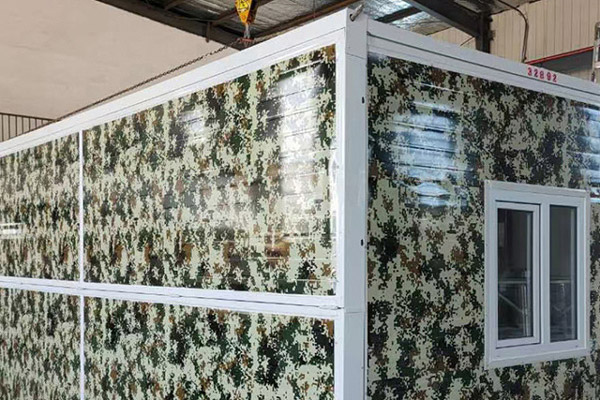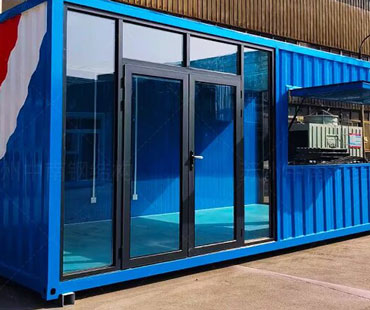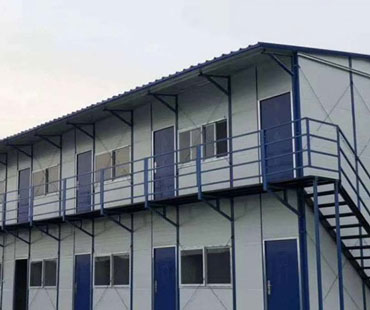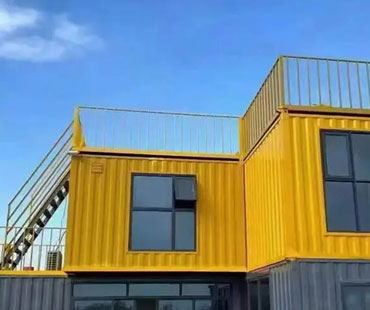In today’s fast-paced world, families are often faced with the challenge of adapting their living spaces to accommodate changing needs. Whether it’s welcoming a new child, accommodating aging parents, or simply seeking more room for activities, the flexibility of living spaces has become increasingly important. Expandable houses have emerged as a revolutionary solution to these challenges, offering a versatile approach to home design that evolves with the family’s needs.
1.What Are Expandable Houses?
Expandable houses are innovative residential structures designed to grow in size and functionality. Unlike traditional homes, which typically have a fixed layout, expandable houses incorporate modular designs that allow additional rooms or spaces to be added as needed. This can be achieved through various methods, such as sliding walls, foldable sections, or prefabricated modules that can be attached to the existing structure. The result is a home that can seamlessly expand or contract, depending on the family’s requirements.
2.Accommodating Growing Families
One of the primary advantages of expandable houses is their ability to cater to the needs of growing families. As children grow, their needs change—from needing playrooms to requiring personal spaces for study and relaxation. Expandable houses allow families to increase their living area without the hassle of moving to a new location. This adaptability can significantly reduce the emotional and financial stress associated with relocating, making it easier for families to remain in their beloved neighborhoods while still meeting their evolving needs.
3.Flexibility for Multi-Generational Living
In recent years, multi-generational living arrangements have become more common, with families choosing to live together to share resources and support. Expandable houses are particularly well-suited for this lifestyle, as they can be designed to include separate living areas for different generations. For instance, an expandable house can incorporate an additional suite for elderly parents or adult children returning home, providing privacy while maintaining close family ties. This flexibility in design can help foster stronger family connections while accommodating the unique needs of each generation.
4.Adapting to Lifestyle Changes
Life is unpredictable, and our living situations often reflect that reality. Job changes, lifestyle shifts, and personal interests can all impact how much space is needed at any given time. Expandable houses provide the freedom to modify one’s living space in response to these changes. For example, a family that once needed extra rooms for children may later convert those spaces into home offices, gyms, or hobby rooms as their children grow and leave home. This adaptability ensures that the house remains relevant and functional throughout various life stages.

5.Cost-Effectiveness and Sustainability
In addition to their adaptability, expandable houses can be a cost-effective solution. Rather than investing in a larger home or relocating, families can expand their existing space incrementally, which often requires a smaller financial investment. Moreover, the sustainability of expandable housing designs can lead to reduced waste, as families can avoid the need to demolish existing structures or build entirely new homes. By utilizing modular designs and eco-friendly materials, expandable houses can also contribute to a smaller environmental footprint, making them an attractive option for environmentally conscious consumers.
6.Innovative Design and Technology
Modern technology plays a critical role in the development of expandable houses. Smart home technology can enhance the functionality of these homes, allowing for automated systems that control lighting, heating, and security. Innovations in construction materials and techniques, such as the use of lightweight, durable materials and advanced prefabrication methods, make it easier to design and build expandable homes. As architects and builders continue to experiment with new ideas, the possibilities for expandable houses are virtually limitless.
7.Challenges and Considerations
While expandable houses offer numerous advantages, they are not without challenges. Zoning laws and building regulations can complicate the expansion process, making it essential for homeowners to navigate local codes carefully. Additionally, the initial design must accommodate future expansions, which may require more upfront planning and investment. However, as interest in expandable housing grows, it is likely that more streamlined processes will emerge, making it easier for families to embrace this innovative living solution.
8.The Future of Expandable Housing
As we move further into the 21st century, the need for adaptable living spaces will only continue to grow. Expandable houses represent a forward-thinking approach to home design that prioritizes flexibility and functionality. By embracing the concept of expandable living, families can create homes that not only meet their current needs but also adapt to whatever the future may hold.
In conclusion, expandable houses offer a compelling solution for families seeking to navigate the complexities of modern living. Their ability to grow and adapt ensures that they can provide comfort, convenience, and connectivity through all stages of life. As more families recognize the benefits of this innovative housing solution, the concept of expandable homes is poised to redefine the landscape of residential living.


